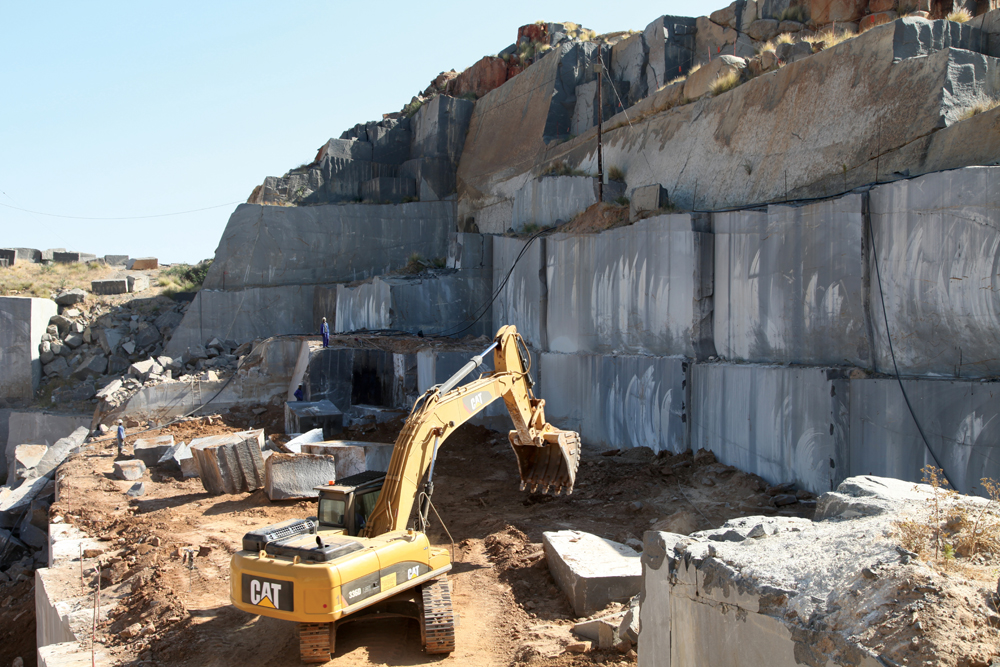Journeying Through Granite Quarries in South Africa: A Visual Odyssey
Journeying Through Granite Quarries in South Africa: A Visual Odyssey
Blog Article
Unearthing the Rich History and Lasting Practices of Granite Quarrying
As we base on the precipice of uncovering the complex tapestry of granite quarrying, a journey with time discloses not just the physical act of removing stone yet also the social and historic relevance woven right into the extremely textile of this practice. From the ancient beginnings that laid the foundation for modern quarrying techniques to the lasting methods that are forming the future of this industry, each chisel mark on granite surface areas narrates waiting to be uncovered (granite quarries in south africa). The heritage of granite quarrying stretches far past plain extraction; it is a testament to human resourcefulness, resilience, and the long-lasting attraction of this marvelous rock
Ancient Origins of Granite Quarrying
Dating back to ancient people, the technique of quarrying granite has actually been an indispensable part of human history and architectural innovation. The earliest evidence of granite quarrying days back to ancient Egypt, where substantial pyramids and detailed sculptures were crafted from this sturdy stone. The Egyptians utilized primitive devices to remove granite blocks from quarries, showcasing the relevance of this material in their monumental buildings.
Progressing in history, the Greeks additionally made substantial payments to the quarrying of granite. The Greeks made use of granite in different building marvels, such as temples and sculptures, demonstrating their skill in shaping and carving this durable rock. The Romans additionally improved the methods of quarrying granite, utilizing advanced tools like chisels and hammers to extract and form granite for their legendary frameworks.
Through the centuries, the method of quarrying granite has progressed, with modern technologies improving performance while keeping the ageless appeal of this natural rock - granite quarries in south africa. From ancient people to contemporary home builders, the tradition of granite quarrying continues to form our globe
Evolution of Quarrying Methods
The development of quarrying methods has been noted by a continual development towards greater performance and precision in drawing out granite. From the fundamental methods used by our ancestors to the sophisticated technologies utilized in modern-day quarrying operations, the industry has actually undergone substantial innovations. Early quarrying methods involved manual work with fundamental devices such as chisels, hammers, and wedges to extract granite blocks from the planet. As worlds proceeded, methods like fire-setting and primitive nitroglycerins were introduced to facilitate the extraction procedure.
Improvements in computer-controlled tools and 3D modeling have actually maximized quarrying procedures, leading to marginal ecological influence and boosted sustainability techniques. As the demand for granite proceeds to increase, the development of quarrying methods remains essential to conference sector requires successfully and sustainably.
Social Relevance of Granite
Granite holds a profound social importance throughout different civilizations due to its long-lasting existence in building masterpieces and revered monuments. The cultural relevance of granite extends past its physical characteristics; it embodies durability, stability, and eternity, making it a symbol of sustaining legacies and practices.

Lasting Practices in Quarrying
In the middle of the rich history of granite quarrying and its social relevance lies an expanding emphasis on lasting techniques within the market. As ecological recognition and problems concerning resource deficiency have heightened globally, the quarrying market has significantly welcomed sustainable approaches to minimize its influence on the environment and surrounding communities.

Moreover, recovery and recovery of quarry websites post-extraction are important to sustainable methods. By bring back quarried areas to a natural or useful state, such as producing wildlife habitats or leisure spaces, quarriers can offset the environmental impact of their procedures and add favorably to the regional ecological community.
Legacy of Granite Quarrying
With a historical background soaked in workmanship and commercial development, what withstanding impact has granite quarrying left on the landscape of modern culture? The tradition of granite quarrying transcends mere removal methods; it has formed building my sources marvels, city landscapes, and social heritage worldwide. The long lasting nature of granite has made it a recommended option for monuments, structures, and infrastructure, standing as a testament to the ability and creativity of quarry workers throughout generations.
Furthermore, the economic footprint of granite quarrying can not be overlooked. The sector proceeds to offer job opportunity and navigate to this website drive local economic climates in regions where granite removal prevails. It has additionally spurred technical improvements in quarrying methods and equipment, causing much more reliable and sustainable techniques.
In regards to sustainability, the tradition of granite quarrying consists of efforts to alleviate ecological influences through reclamation jobs and liable resource monitoring. By balancing financial interests with environmental stewardship, the market makes every effort to ensure that future generations can remain to benefit from this long-lasting natural deposit.
Conclusion

Report this page